Do you spend more time strolling through the mall or scrolling Amazon reviews? When you’re shopping for a new winter jacket, do you try it on, or trust your gut? Who do you go to for advice on a new computer: your best friend or your favorite tech site?
These questions would’ve seemed preposterous even five years ago. But today our consumer decisions are being shaped in surprising ways. In a recent Top10.com survey, we asked more than 1,000 people to tell us how they make purchasing decisions. The answers shed some interesting light on how our spending habits are changing and what that means for our personal time, our wallets, and our relationships.
Do We Trust Strangers More than Our Friends?
We asked our respondents what resources most influenced their buying decisions. A solid 70% said they relied on recommendations from friends and family.
Which makes sense. After all, who but our closest confidants could better steer us towards the warmest jacket, the best computer, the safest car?
What Sources of Information Do You Use When Making Purchasing Decisions?
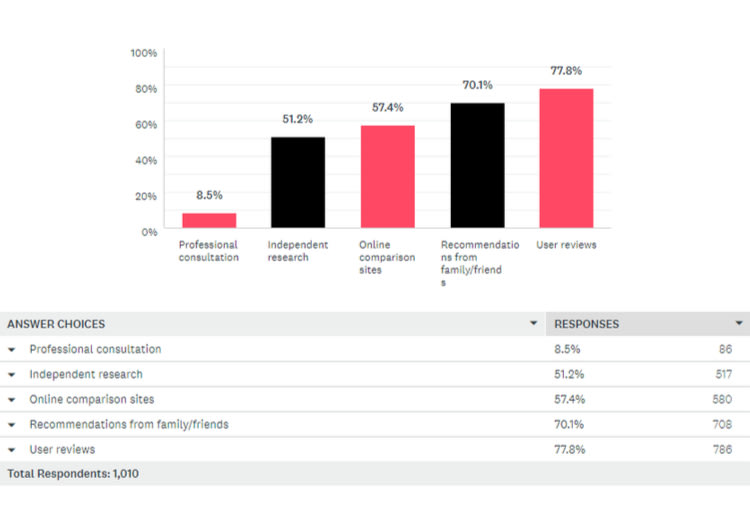 Or not. As you can see in the graph, family and friends came in 2nd. It turns out the people we trust most for purchasing advice are...random strangers on the internet.
Or not. As you can see in the graph, family and friends came in 2nd. It turns out the people we trust most for purchasing advice are...random strangers on the internet.Just short of 80% of people said their most reliable source of consumer information were user reviews.
If that sounds disrespectful to our loved ones, don’t worry, there might be more to the story. In Top10.com’s scholarly analysis of the same survey, behavioral economics expert Gleb Tsipursky reassures us that we haven’t simply lost faith in those closest to us. As recently as 2012, notes Gleb, 92% of us were more likely to ask friends and family for buying advice. Since then, the number has decreased, while our reliance on user reviews continued to rise.
The reason? We’re just doing more shopping online, is all. “When consumers make online purchases,” says Tsipursky, “they often don’t have the opportunity to consult friends and family.” Family and friends is still 2nd, though independent research is gaining on them.
What do Brains Have to Do with It?
Surprisingly, most customers “trust their gut” when making shopping decisions. Here you can see the evidence:
To What Extent do you “Trust Your Gut” When Making Purchasing Decisions?

We decided to dive a little deeper into this surprising discovery. After all, just above, we saw that, if nothing else, we can be pragmatic when we want to, turning to user reviews instead of our loved ones for good shopping advice. So how does intuition fit into this colder, more fact-based buyer’s strategy?
Could it be that only the flaky, research-averse amongst go with their guts? Surely there must be practical, fact-based folks who would never leave their money in the hands of intuition, right? Below, we filtered our results by education level:
To What Extent Do You Trust Your Gut When Making Purchasing Decisions?
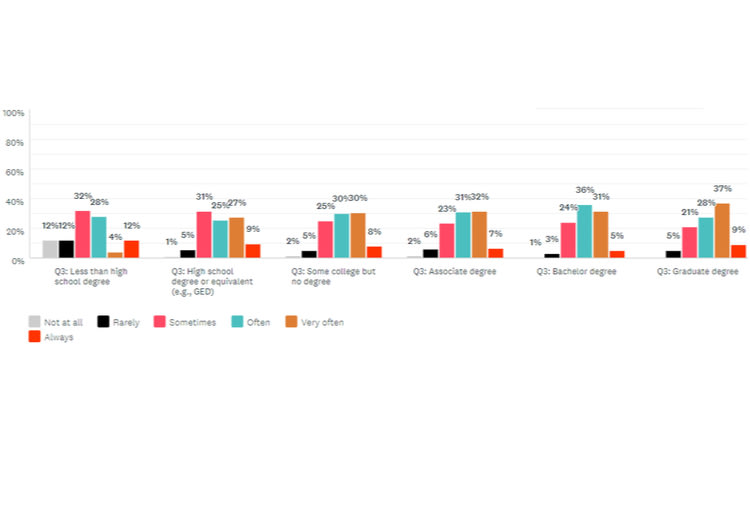 Nope. Not only did the “most educated” of our respondents also claim to make purchases by gut...they do it the most frequently!
Nope. Not only did the “most educated” of our respondents also claim to make purchases by gut...they do it the most frequently!Compare the 37% of people with graduate degrees who buy with their gut “very often,” to just 4% of people with less than a high school degree, 30% with some college but no degree, and 32% of people with an associate degree. As we can see from this, the level of education has little to do with whether or not we make our purchasing decisions based on research or intuition.
Smart Spending Means Doing the Research
We decided to see if there was a correlation between respondents’ education levels and the amount of research they put into their purchases.
How Long Do You Research Before Purchasing a Product on Average?
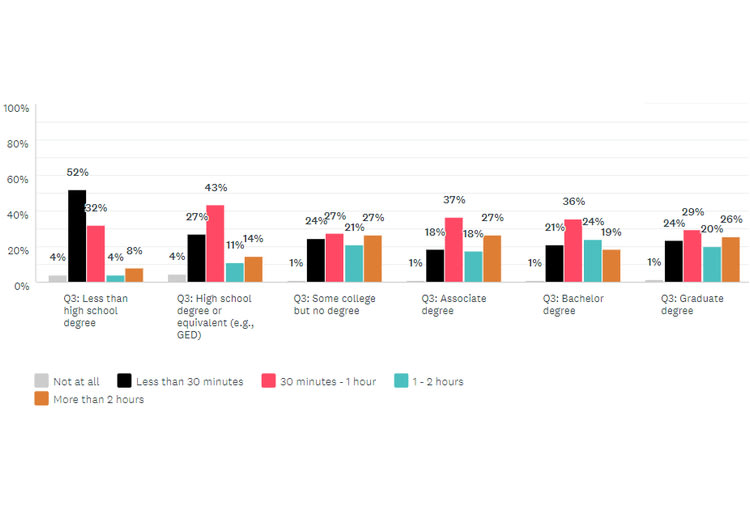 Those with no more than a high school degree or equivalent were most prone to spend 30 minutes to an hour researching. Those with some college education but no degree and those with an associate degree both were most likely to spend more than 2 hours doing research.
Those with no more than a high school degree or equivalent were most prone to spend 30 minutes to an hour researching. Those with some college education but no degree and those with an associate degree both were most likely to spend more than 2 hours doing research.If we break out numbers down by college degree vs. no college degree, we can see that those with college degrees spend more time doing research than those without.
But does the research pay off? We asked our respondents how often they regretted their purchases. Here are the results broken down by education level:
How Often Do You Make Shopping Decisions That You Regret
 Though there are some interesting flourishes, the answers seem to reflect the above graph. More research leads to less buying regret. If we needed more proof of that, here’s a look at the general results without our education filter:
Though there are some interesting flourishes, the answers seem to reflect the above graph. More research leads to less buying regret. If we needed more proof of that, here’s a look at the general results without our education filter:How Often Do You Make Shopping Decisions That You Regret?
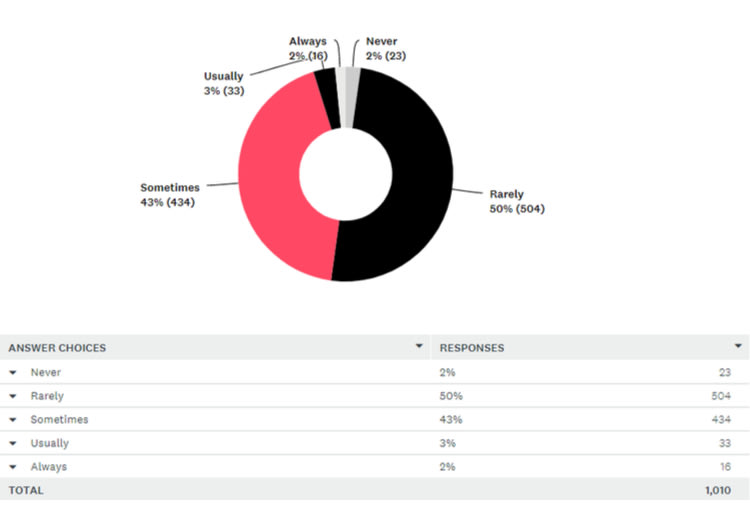
How Long Do You Research Before Purchasing?
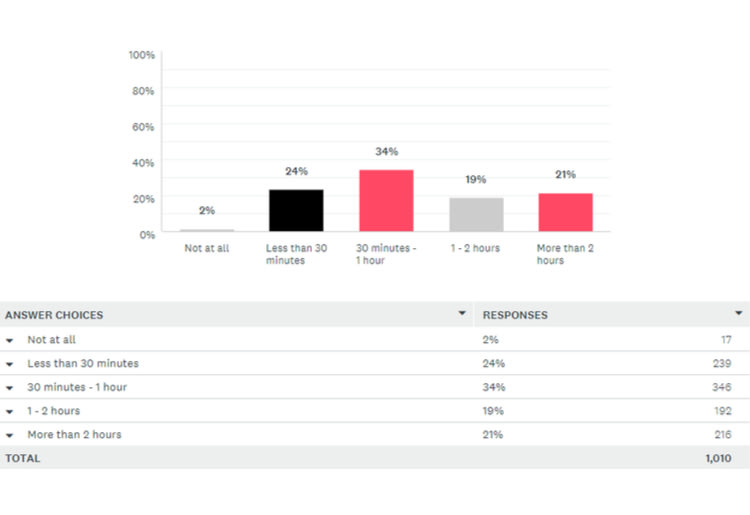
The Youth are Less Enchanted by Brands and Logos

.20190814143630.jpg) Things take a surprising turn here. Note the ‘brand familiarity’ bar. The oldest respondents care more about brand recognition than any other age bracket. Not only that, but the numbers decreased consistently as respondents got younger.
Things take a surprising turn here. Note the ‘brand familiarity’ bar. The oldest respondents care more about brand recognition than any other age bracket. Not only that, but the numbers decreased consistently as respondents got younger. This seems counterintuitive. We think of the young as trendy, and would expect them to be most influenced by brand names, logos, etc., while we’d expect older consumers to be more influenced by comfort or durability. Interestingly, our survey demonstrates the exact opposite. While older shoppers are more influenced by brand recognition, the young are much more likely to buy out of comfort.
Let’s compare our oldest and youngest shoppers:
How can we explain this? Younger shoppers may be more interested in designer names, but older shoppers are more loyal to brands that have proven themselves to be reliable. Perhaps the expanded online market and proliferation of products have made younger shoppers less sentimental to brand names and more flexible to buying based on price and other factors.
The two-dimensionality of online shopping could also have something to do with this, making products more interchangeable than ever.
The Bottom Line
Our survey gives us some interesting insights into how emotion, intuition, and fact-based research inspires our consumer decisions.
Consumers today seem less emotional—relying more on user reviews than advice from loved ones, for example—but more intuitive, trusting their guts at a surprisingly high rate. Sentimentality and brand loyalty seem to be on the decline as well: surprisingly, younger respondents care more about comfort and convenience than brand recognition, while older respondents cling to brand familiarity, even more so than quality and comfort. Research is playing an increasingly important role in purchasing online, and the effort directly corresponds to our satisfaction with our decision. That said, people across all ages, genders, and education and income levels still go with their gut, demonstrating the universal role that intuition plays in our purchasing decisions. So what gives?
It’s safe to say that online shopping is the cause of these interesting trends. As online marketplaces increase and brick-and-mortar stores disappear into the past, we find that we have more options than ever, but less in-person exposure to them. This would naturally cause a shift in our buying criteria, which indeed is moving from the sentimental to the factual, from the experiential to the anonymous, from tactile shopping to crowd-sourcing. It’s safe to say that these trends are here to stay. But no matter how much abandon brand loyalties, or choose online reviewers over our own friends, we’re still keeping it local in one way: by trusting our guts.
.20190814141821.jpg)